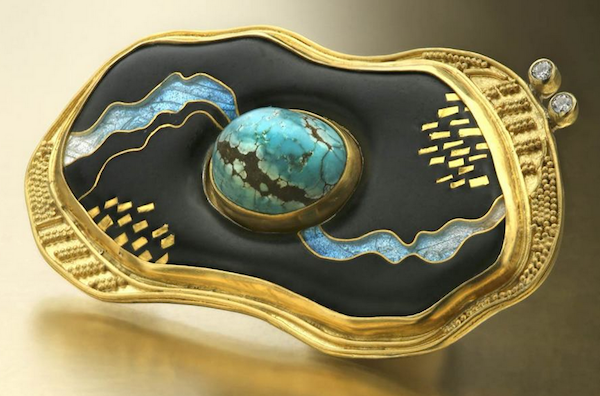Passing on tricks of the trade for both design and craftsmanship is a crucial part of maintaining high standards for studio jewelry. Today we pay tribute to an artist who made teaching those skills an art form in itself.
After four decades directing one of the most well-known and respected jewelry schools in the U.S., Alan Revere closed the Revere Academy in December 2017. Anyone hoping to take a workshop there is out of luck, but you can still learn from Alan’s instructional guides. (Scroll to the bottom for links). Or look into other jewelry schools in the U.S.
Alan trained many influential jewelers over the years and helped raise the standard for jewelry craftsmanship and design in this country. After learning his trade at Pforzeim, he began teaching in the San Francisco Bay Area in 1974, opening his own school five years later. Since then, he has trained and mentored hundreds of studio jewelers and designers. A few went on to fame and fortune, many built satisfying careers as designers, jewelers, and creative entrepreneurs.
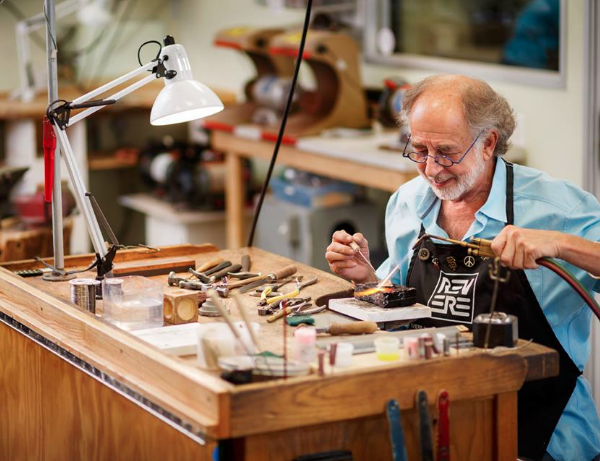
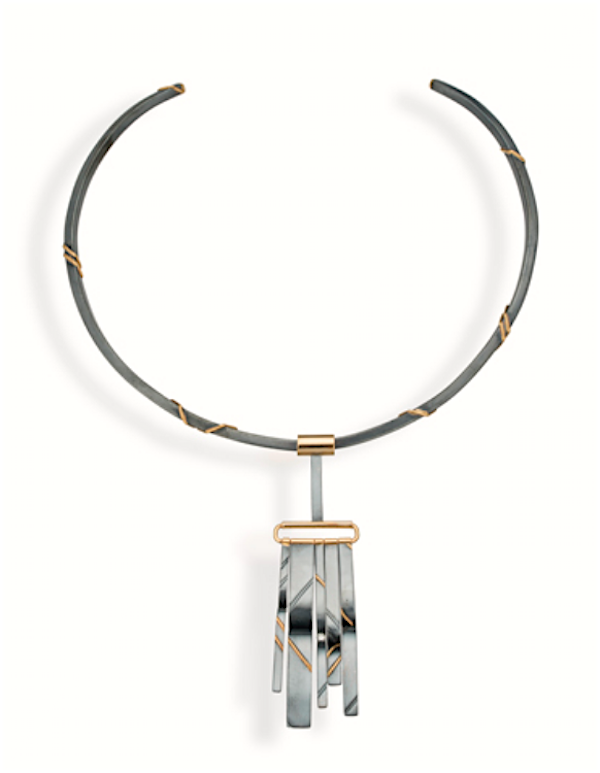
In the process, Alan continued to work as a studio art jeweler, wrote four books, produced eight instructional DVDs, co-founded the Contemporary Jewelry Design Group, and traveled extensively as a guest lecturer and instructor.
Anyone who has worked with Alan will tell you he’s not only an excellent teacher but a talented designer/maker and a very nice guy. I had the pleasure of interviewing him in March 2015. A few highlights from that interview…
Your name is synonymous with the highest level of jewelry education in the U.S. What inspired you to open the academy?
Alan Revere: There were a whole bunch of things that led to opening the school. One was that I had always liked showing people how to do things they didn’t know how to do. Even as a youngster, I was teaching swimming and diving.
So you were a natural teacher?
AR: Yeah, I think so. Even as a student in Pforzeim, I remember drawing up a floor plan for a school with another student. I came back thinking I was going to work, not teach, and I did. But then I met a few people and they asked me to show them things. I added three extra benches and started holding classes in my studio in Oakland in the mid-70s.
At the time, there weren’t a whole lot of options for learning jewelry-making in this country.
AR: You’re absolutely right, and the options for learning how to do gold work or jewelry work were not available or accessible. Universities had a few very academic programs, mostly taught by people who had come out of WWII as veterans and had been supported by the GI Bill. A few of them went into crafts and became leaders and those were the ones teaching at universities.
That was the jerry-rigged generation, right? Some of them adapted blue collar trades to jewelry-making.
AR: And a lot of them just taught themselves – people like Florence Resnikoff or Merry Renk, who were just artists, They learned enough to get a foot in the door and then they knew more than anybody else because the field of jewelry-making didn’t work its way into universities in this country. It came in the back door.
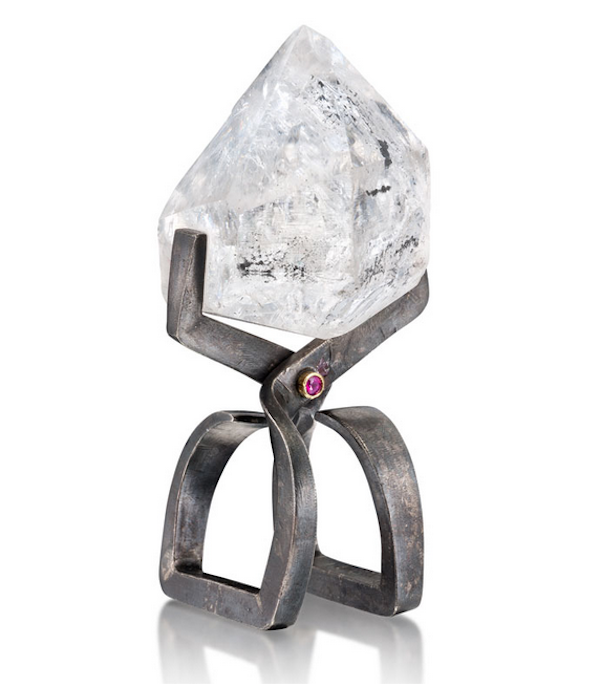
Some people think that lack of formal training helped with creativity, opened us up a little bit. Do you agree with that?
AR: No. I think creativity is a separate issue. You can be technically excellent and also creative. In fact, I think it’s the other way around. The more you know, the more words in your vocabulary, the more creatively expressive you can be. You’re limited if you don’t really know what you’re doing. And yeah, [those pieces] may be fun and innovative but, y’know, they might not work.
True with fine arts too, for a long time. Avant garde artists in the 20th century often came from academic training.
AR: Yep, yep. I’ve always been grateful that I had a very strong technical training because I know so many different ways of working metal that my creativity has a lot of room to explore.
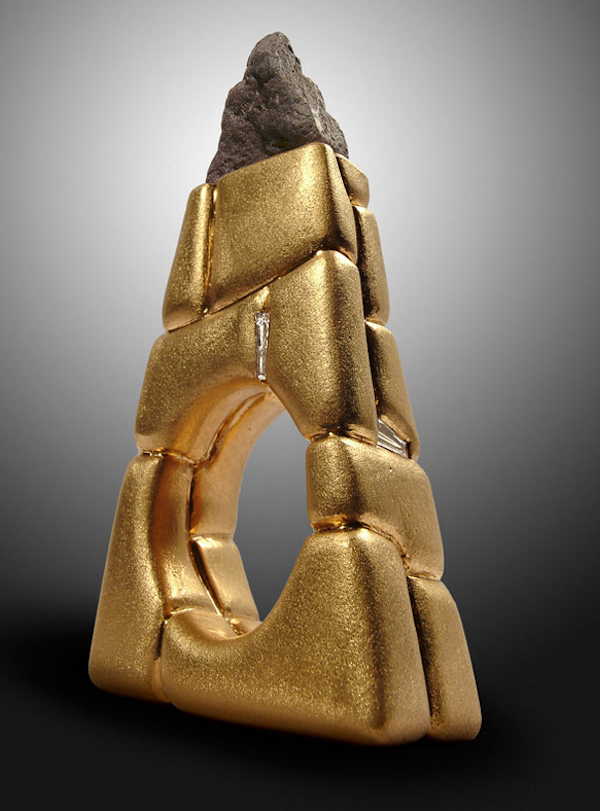
You’ve been doing this for four decades now. What did students come to you looking for and what did you find yourself trying to teach them?
AR: The answer to that would have been different 10 to 20 years ago, or 30 years ago. What I try to do, because I love what I do so much, is just share it. That’s the general concept. And we have the faculty and tools and programs to train people to do a wide variety of work, to give them the tools so they can be expressive creatively.
The other part is how thing have changed. This is what’s interesting. When I started the school in 1979, probably 80 percent of the students were young men who were looking for a job. A lot of them were going into a family business, but they were looking for a bench job and there were very few.
Now its 90 percent – 90 percent! – women, who are primarily looking for self employment, looking to take their two or three pieces of jewelry and see if they can make that into a livelihood by selling online. In the middle, it was a whole different group – that I was part of – the baby boomer craftspeople trying to reach larger markets. For many years we had people who did lots of craft shows and trade shows.
Who are the most successful students to come out of the academy?
AR: We’ve had some very successful students. I don’t keep track but a few members of the American Jewelry Design Council. Micheal David Sturlin is a student of mine, and now a teacher here. Bree Richey is a former student. She’s pretty hot right now. We had a student from Thailand, Atty Tantivit who went to Bangkok and opened the Atta Gallery which is probably the finest jewelry gallery in Southeast Asia right now. Jim Binnion is the world expert on mokume gane. He came to my program while still a submariner in the Navy, took a class and took off with it. Bonny Doon was founded by Lee Marshall after he took some of our classes and realized some of our students need tools.
Lots of students have successful businesses as designers, storekeepers, stone cutters. Wherever I go, I run into students and they seem to be having a good time. We’ve had students get married, divorced, go into business together. There’s something special about what I’ve created in that school, something very vibrant and vital. We attract a high quality student, people who looked around and decided this is the place and they come with such enthusiasm and energy. And they do beautiful things. And they disappear. And once in a while, I’ll hear about them.
A lot has changed since you opened the school. How do you feel about CAD?
AR: How do I feel about CAD. I have two opinions about CAD. I have my own personal opinion and then I have my more professional opinion. The professional opinion is it’s a tool, an incredibly useful tool and can be used to do things that weren’t possible before. You can’t eliminate a tool that is so awesome and versatile and growing, so CAD had be included in our contemporary program.
And your personal opinion?
AR: It doesn’t interest me at all. I find it absolutely the opposite of what interests me. I’m interested in hand, I’m not interested in keystrokes. We’ve got a really good CAD-CAM program, quite useful. But 3D design? I don’t pay attention to it. Computers are awful for artists. My creative energy runs down and out my arms. It’s kind of an electric force that doesn’t want to express itself through a keystroke.
Do you design in the process of making?
AR: The process of design has always fascinated me and I’m an expert on that – my own methods and other people’s methods. I generally don’t now design by holding metal in my hands, although I used to when I began. And it works. There’s nothing wrong with it. But now I like to plan things much more. I like to explore the possibilities by making drawings and models rather than just taking a straight road somewhere. A winding road might be more interesting.
So when you say it comes out your arms, you mean also sketching.
AR: Yeah, yeah. I teach design. I’m not really modest because when I know I do something well, I’m okay saying it. I really teach an excellent design class. I’ve studied design with many people. The class I teach really opens up people’s eyes to the possibilities and shows them how this creative energy just flows and you can turn it on and off like a faucet. The way I like to design is to just think it.
When you look at jewelry, what do you look for? What impresses you and what drives you crazy?
AR: I like the last part. I’ve been looking at jewelry so intently for so long. For 50 years, I’ve been looking at jewelry. Jewelry that I like most is getting a little harder to find. And most of the jewelry that I see people producing these days is not as interesting as I think standards have lowered in a few areas. I like individual creativity. I’m not so interested in things that look like they’re mass-produced and a lot of jewelry that I see, that people are making, they’re trying to make it look as if it’s mass-produced. To make it look like it’s more accessible or… things have changed, and I’m kind of stepping back and trying to understand the new reality. I see a lot of jewelry that just doesn’t interest me. I don’t know. It’s boring.
Some of what people call designer jewelry has started to look kind of stamped out and a little derivative.
AR: A little? Yeah. Anyway. Jewelry serves many purposes. One is for the creator, the maker, the designer. One is for the wearer. One is for the viewer. One is for the collector and another for the anthropologist. It serves so many purposes. I feel like I’m really fortunate to ride this crest of jewelry when it was really, really strong. I was there in the marketplace when the marketplace really helped me and I just loved it. And I’ve been fortunate to train other people to express themselves. I’m still just watching it all happen.
What would you like to see change in the jewelry industry in this country?
AR: I’d like time to go backwards but that’s just silly. I don’t know how to answer that one. I know what I like personally but I wouldn’t change things. What I want to do is just show people that they can use their hands to be creative instead of just thinking with their heads, that they can connect with their body and experience pleasure by making beautiful things. By the way, if you haven’t already, check out my secret website Adorn America.
If it’s a secret, am I allowed to share it?
AR: Yeah, it’s not really a secret, it’s more covert. It’s a message that I delivered as a keynote speaker, a message about being generous with jewelry. This came out at the peak of the recession. I gave a talk to about 200 makers and tried to explain to them the benefits of giving their jewelry away for free and how to do that consciously in a way that would help everybody.
You also republished your book Professional Jewelry Making right as we were coming out of the recession. What did you do in that edition?
AR: It was totally redesigned so it’s easier to read and all the photos are larger and sharper. There are five new projects in the book. Tim McCreight published it. It’s just an easier, friendlier, more modern and more complete book.
That book gets the best reviews.
AR: Yeah. For what I was trying to do, I think I’ve succeeded. It’s a really fine book and I’m proud of it.
Thank you for this wonderful conversation, Alan. And thanks for everything you’ve done for jewelry makers and designers.
AR: Thanks for making me think about these challenging subjects. I think what you’re doing is a great thing, communicating about jewelry, connecting people to jewelry and giving them resources. Thanks a lot for that.
Want more like this? Subscribe to get posts hot off the press.
This page contains affiliate links. Thank you for supporting The Jewelry Loupe.


